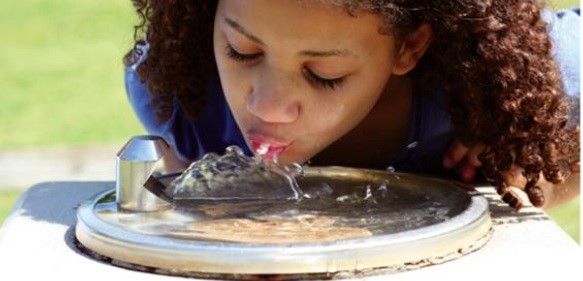 Lead in Drinking Water Filtration Program for Childcare Development Facilities
Lead in Drinking Water Filtration Program for Childcare Development Facilities
Protecting Children from Lead in Drinking Water
The District is working to keep kids safe from lead exposure through an ongoing water safety program.
Partnership for Safety
In collaboration with the Office of the State Superintendent of Education (OSSE), the Department of Energy and Environment (DOEE) supports all DC-Licensed Child Development Facilities to meet the requirements of the Childhood Lead Exposure Prevention Amendment Act of 2017 and D.C. Code § 7-2051.
What's Being Done
To ensure water safety:
- Annual sampling is performed on drinking water sources.
- Certified filters are installed to reduce lead levels.
These filters meet strict health standards:
- National Sanitation Foundation (NSF)/American National Standards Institute (ANSI) Standard 42, 53 and 401 (Health Effects)
What Counts as a Drinking Water Source?
Any faucet or fixture where water is reasonably expected to be consumed or used for cooking falls under the definition—this includes sinks, drinking fountains, commercial kitchens and more.
Lead Safety Standards
The law sets the actionable limit at 5 parts per billion (ppb). DOEE is committed to reducing lead exposure and protecting the health of children in licensed facilities.
Non-Consumption Signage
- Non-drinking water outlets - such as bathroom sinks, utility sinks, and lab faucets are clearly labeled to indicate they are not safe for drinking or food prep.
- Signage is placed at these outlets to exempt them from testing and remediation, as long as the signs remain in place.
Filter Maintenance and Testing
- DOEE replaces filters and conducts lead testing on a recurring basis at every facility.
- Drinking water sources with lead levels above 5 ppb are shut off, tagged with signage indicating “DO NOT DRINK” and require corrective action, such as repair, filtration and retesting.
- Want to know the results of the drinking water testing conducted at your child's development facility? Input the date and view results: specific testing dates and results
For questions about this program, email [email protected]
Other Agencies Involved in School Facility Testing
In addition to DOEE, other District agencies help ensure environmental safety in public schools and facilities:
- Department of General Services (DGS) DGS conducts water sampling and environmental testing in DC Public Schools (DCPS) and Department of Parks and Recreation (DPR) centers. Explore DGS Environmental Testing and Safety
- DC Public Charter School Board (DC PCSB) installs lead filters on every drinking water source in every DC public charter school Find the results of lead testing at all DC Public Charter Schools.
- Interagency Working Group on Artificial Turf and Playgrounds - This group oversees safety testing for synthetic surfaces and playgrounds across District properties. Learn about turf and playground safety.
Updates Since the 2017 Act
Protocols have evolved since the Childhood Lead Exposure Prevention Amendment Act was passed:
- D.C. Code § 7-2051 was codified on January 1, 2024, guiding DOEE’s prevention of lead in drinking water in child development facilities.
- 2019 and 2024 updates to the Water Filtration and Testing Protocol introduced new best practices based on EPA guidance and expanded testing procedures for DCPS and DPR facilities.
- The District’s goal now goes beyond the legal limit of 5 ppb—aiming for less than 1 ppb in DCPS and DPR drinking water sources wherever possible.
You can review the full draft update in this 2024 protocol document: DGS Water Filtration and Testing Protocol 10.28.24.
Learn More
Curious about where lead in water comes from and how to stay safe? Explore lead sources in drinking water, tips to avoid exposure and EPA’s 3Ts: Sources of Lead in Drinking Water.pdf. 3Ts for Reducing Lead in Drinking Water | US EPA
Visit DC Water’s Lead Free DC website to see if your home’s pipes are lead on their Service Line Inventory Map, check when your neighborhood is set to have pipe replacement construction, and to request a free lead test kit for your home: Lead Free DC | DC Water
Make sure your child gets tested for lead at the doctor, twice by the age of two: Every Child. Twice By Two.
For Recalls and Product Safety Warnings related to lead, visit the Consumer Product Safety Commission website: Recalls & Product Safety Warnings | CPSC.gov.

